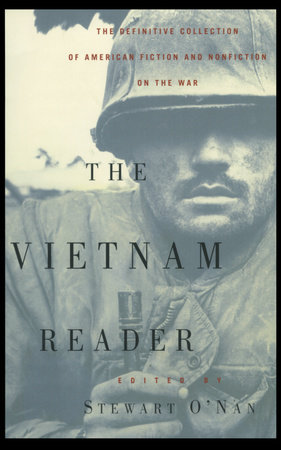Excerpt
The Vietnam Reader
from the Introduction
A few years ago when I began teaching the American literature of the Vietnam War, I tried to find an anthology my students could use—a book that collected all the major work in one place. This didn't seem far-fetched; the war had been over for twenty years, and thousands of books had been written about it. But as I searched through libraries and catalogues, new- and used-book shops, I discovered there wasn't one.
Yes, there were anthologies, but most were out of print and none put together all the pieces I considered essential. Some were fitted together like polemics, others relied too heavily on dull reportage. There were solid poetry anthologies, most notably W. D. Ehrhart's
Carrying the Darkness, but few books had tried to collect everything—the fiction, the oral histories, the memoirs, the films, the photos—and those that did inevitably had gaps. Imagine a comprehensive Vietnam anthology without the work of Michael Herr or Tim O'Brien or Larry Heinemann, without a healthy sampling of the oral histories, without a single mention of
Platoon, without Ronald Haeberle's famous picture of the ditch at My Lai.
Instead of ordering a single volume and sending my students to the campus store, I began digging through the individual novels and poetry collections, poring over the photographic essays, watching the films, taking notes, making photocopies. I haunted the used-book stores for sadly out-of-print work, borrowed books from colleagues, sat in the stacks of libraries. What I finally came up with was a course packet weighing in at around six pounds, the permissions for which were impossible to secure in time for the semester.
While I've cut a great deal from that original manuscript, this book remains true to its core. I believe I've chosen and hunted down the elusive permissions for the best and best known works about the war, selections that will give the reader both an essential overview and a deep understanding of how America has seen its time in Vietnam over the past thirty years.
Any Vietnam anthology should bring its reader closer to the war, and in teaching my course I found that one way to accomplish that, beyond presenting students with the usual literature, was to include such powerful and immediate material as photographs, films, and popular songs. They bring the war home inescapably, in the same way they inflamed and informed the public when they first appeared. It's one thing to tell a class that the average age of the combat soldier in Vietnam was nineteen, another to show them a roomful of recruits no older than themselves. By examining the films and songs, my students gained a deeper appreciation for how the war, and its representation, has always been debated in a charged, extremely public forum, and how that debate has changed over the years. As with the literary selections, the photos, songs, and films I've chosen to include are the best and best known, some, like Haeberle's shot of My Lai, practically iconic at this point.
The Vietnam Reader is organized according to two chronological schemes. The first is the typical arc of the Vietnam narrative and traces the tour of duty from induction all the way through returning stateside. The second scheme is the timeframe during which these books and films were released. In certain chapters (such as the popular songs) I found it did more justice to the material to collect works that span a great deal of time but are similar in either theme or genre, thereby illustrating how trends in representing Vietnam echoed the changes in American popular and political culture. This combination of approaches is intended to give the reader a better sense of how both the soldiers' and the public's attitudes toward Vietnam have changed as the years pass.




